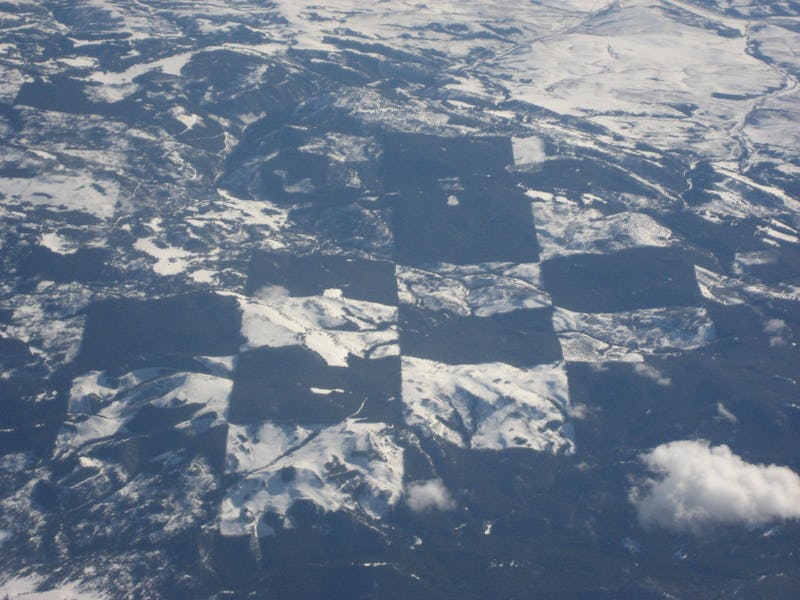E.O. Wilson's Wild Half-Earth Plan Isn't Radical Enough to Save the Planet
E.O. Wilson's plan to set aside 50 percent of the planet for nature will doom nature.

Biodiversity isn’t a moral value. The myriad forms of life on Earth create, in aggregate, the ecosystems that keep human beings fed. Biodiversity is a necessity.
Biodiversity is also under extreme and immediate threat. “The Sixth Extinction,” as scientists have dubbed the massive recent increase in extinctions, puts humans at existential risk. Within that context, outrageous solutions no longer sounds so outrageous. That’s why the proposal from famed biologist and author E.O. Wilson to set aside half of the land and half of the oceans as nature preserves has been met by critics with thoughtful nods.
The book in which he makes his case is due out in March, but some of the specifics have already arrived. Wilson wants to effectively rope off that large swaths of the Mongolian taiga, the wilderness of Congo, the forests of Papua New Guinea, and much of the Amazon. In so doing, he hopes to protect several of the world’s larger carbon storires, which also happen to be hotbeds of plant and animal life. But this is a climate change solution to a biodiversity problem. Ecosystems aren’t so neatly contained as carbon molecules. Wilson’s plan might help the environment, but it foregrounds the issue of climate change in a way that could speed the decline of any number of species.
To put the scale of Wilson’s idea into perspective, agriculture may already claim some 40 percent of Earth’s surface. Still, Wilson is optimistic that humans can be convinced to stick largely to the remaining 10 percent. What does the winning argument look like? Money, of course. Wilson postulates that, by ncentivizing both private landowners and governments, a global conservation movement can set aside truly massive tracts of land. This is not — it should be noted — crazy. This sort of conservation has seen success on large and small scales. Under the UN’s REDD+ program, Brazil has been paid a billion dollars for conserving its forests. A similar fee is headed Indonesia’s way if it can successfully do the same. Private philanthropists, too, have taken up this cause. North Face founder Douglas Tompkins spent millions buying up swaths of Chilean and Argentinian wilderness for the purpose of creating nature preserves.
The flaw is in the idea, not the notional execution of it. History and environmental science tells us that slicing up the world into spaces for people and spaces for nature is a goal fundamentally at odds with the goal of teaching humans to live sustainably.
First of all, conservationists are increasingly recognizing that a fragmented system of wilderness parks can’t shield biodiversity from the horrors of the “Anthropocene.” What we need are long, continuous wildlife corridors that give animals access to a sizable range. That thought has spawned initiatives like the Yellowstone to Yukon Conservation Initiative, which sets as a goal an unbroken system of protected areas from northwestern Canada to Wyoming. These systems are built around humanity rather than vice versa because vice versa can get ugly.
Farmland in Iowa.
Imagine we achieve a 50-percent protected world. Half of the planet is lush and full of life. The other half becomes barren and degraded as humans take what they can. The protected space, meanwhile, becomes more and more valuable. Poaching, illegal homesteading, and scavenging become growth industries. The system by which the land was set aside collapses due to political demands of humans upset that Caribou have the run of things.
See, the protected half does humans no good if they cannot learn to live in it and take from it sustainably. The unprotected half does humans no good unless they can learn to invite nature in and keep it there.
The solution, whatever it ultimately is, can’t involve a formulation in which humans are antithetical to nature. Nurturing biodiversity is as critical as protecting carbon sinks, but attempting to do so merely by removing people is inadequate. Civilization has always expanded. Yes, a purposeful contraction might be possible, but the expansion ensues again. The “Sixth Extinction” still arrives, maybe just a century late.
Wilson’s half-Earth plan is radical, but the problem with it is that it’s not radical enough. A system that allows us to continue behaving the way we have — albeit within borders — is a system that makes destruction inevitable.
This article was originally published on